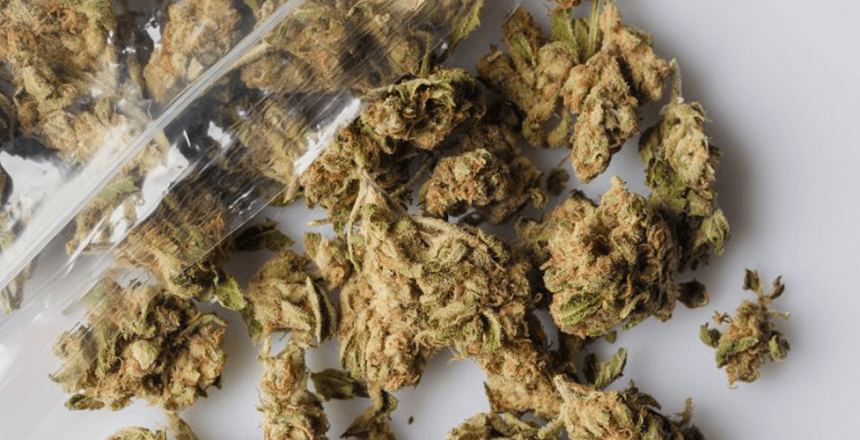The world of cannabinoids is expanding, and with it comes the opportunity to explore different combinations and blends of these compounds. Delta 8 THC, delta 9 THC, and delta 10 THC are three cannabinoids that have gained attention for their unique properties and effects. In this comprehensive guide, we will delve into the reasons why people choose to mix these cannabinoids, the potential synergistic effects, and the considerations to keep in mind when combining them. By the end, you will have a better understanding of the benefits and complexities of mixing delta 8, delta 9, and delta 10 THC.
Understanding Delta 8, Delta 9, and Delta 10 THC
Delta 8 THC, delta 9 THC, and delta 10 THC are all naturally occurring cannabinoids found in the cannabis plant. Delta 8 THC and delta 9 THC are isomers, meaning they have the same chemical formula but differ in the arrangement of atoms. Delta 10 THC, on the other hand, is a less well-known cannabinoid that shares similarities with both delta 8 and delta 9 THC. Each cannabinoid has its own set of effects on the body and mind, ranging from psychoactive properties to potential therapeutic benefits.
Exploring the Synergistic Effects
When combining cannabinoids, there is the potential for synergistic effects, where the combined effect is greater than the sum of their individual effects. This phenomenon, known as the entourage effect, suggests that the interaction of different cannabinoids, terpenes, and other compounds in the cannabis plant can enhance and modify their overall effects. By combining delta 8, delta 9, and delta 10 THC, individuals may experience a unique and nuanced experience that differs from consuming each cannabinoid separately.
Tailoring the Experience
One of the reasons people choose to mix cannabinoids is to tailor their cannabis experience to their specific preferences. By combining different ratios of delta 8, delta 9, and delta 10 THC, individuals can fine-tune the desired effects. For example, some may prefer a more relaxed and euphoric experience with a milder psychoactive effect, which can be achieved by incorporating delta 8 THC. Others may seek a more potent and traditional high, in which case a higher concentration of delta 9 THC may be desired. By experimenting with different cannabinoid combinations, individuals can find the balance that suits their needs.
Potential Therapeutic Benefits
While research on the therapeutic benefits of these specific cannabinoid combinations is limited, some anecdotal evidence suggests potential advantages. For example, delta 8 THC is believed to possess antiemetic properties that may help alleviate nausea and stimulate appetite. Delta 9 THC has long been recognized for its potential analgesic and anti-inflammatory effects. Delta 10 THC, although less studied, may also contribute to these benefits. By combining these cannabinoids, individuals may potentially amplify the therapeutic effects they seek.
Considerations and Precautions
When combining cannabinoids, it is crucial to consider several factors. Firstly, it is important to be aware of the legal status of each cannabinoid in your jurisdiction, as it can vary. Understanding and adhering to local laws is essential to ensure compliance. Additionally, individuals should approach mixing cannabinoids with caution, as their effects can vary based on factors such as dosage, individual tolerance, and personal sensitivities. It is advisable to start with low doses and gradually increase as needed while paying attention to how your body responds.
Quality and Safety
When sourcing cannabinoids for mixing, it is vital to prioritize quality and safety. Look for reputable brands that provide third-party lab testing to confirm the potency and purity of their products. Ensure that the products you are purchasing comply with relevant regulations and quality standards. By selecting high-quality products, you can reduce the risk of potential contaminants and ensure a more reliable and enjoyable experience.
The Rise of Cannabinoid Blends
In recent years, there has been a surge in interest and experimentation with cannabinoid blends and combinations. As cannabis research progresses and more cannabinoids are discovered, individuals and industry professionals have recognized the potential benefits of combining these compounds. This has led to the emergence of a market that offers a variety of pre-mixed blends and customizable options for consumers to explore.
The Role of Terpenes
Terpenes, aromatic compounds found in cannabis and other plants, play a significant role in the overall cannabis experience. They contribute to the distinctive flavors and aromas of different strains and can also interact with cannabinoids to produce specific effects. When combining delta 8, delta 9, and delta 10 THC, considering the terpene profile of each cannabinoid can enhance the overall synergy and influence the desired experience.
The Importance of Dosage and Titration
When mixing cannabinoids, it is crucial to pay attention to dosage and titration. Finding the right balance and dosage is a personal journey that requires careful consideration. Start with low doses and gradually increase until you reach the desired effects. Keeping a journal to track your experiences with different combinations and doses can be helpful in finding your ideal balance and avoiding potential adverse effects.
Exploring New Frontiers: Research and Innovation
The field of cannabinoid research is continuously evolving, and the exploration of combining different cannabinoids is an area ripe for further study. As interest in these blends grows, researchers are delving into the potential synergies, therapeutic benefits, and safety considerations associated with mixing cannabinoids. Continued research and innovation in this area may provide valuable insights and new discoveries in the future.
Conclusion
Combining delta 8, delta 9, and delta 10 THC offers individuals the opportunity to customize their cannabis experience, explore potential synergistic effects, and potentially enhance therapeutic benefits. However, it is important to approach cannabinoid mixing with caution, considering legalities, individual sensitivities, and dosage control. As research continues to evolve in this field, staying informed and making informed choices are crucial for a safe and satisfying experience. Consult with healthcare professionals or experienced cannabis experts to gain personalized guidance and support when exploring cannabinoid combinations.
Monika Wassermann is a doctor and a freelance writer based in the UK who lives with her cat Buddy. She writes across several verticals, including life, health, sex and love, relationships and fitness. Her three great loves are Victorian novels, Lebanese cuisine, and vintage markets. When she’s not writing, you can find her trying to meditate more, weightlifting, or wandering around in town.
[email protected]
- Fizzy Fun: Exploring Melo THC Beverages! - April 22, 2024
- Exploring Jaw Slimming Techniques: Insights from Dr. Laura Geige - April 1, 2024
- Lip Fillers, Botox, Dermal Fillers, Anti-Wrinkle Injections in Arkley EN5 - March 22, 2024




